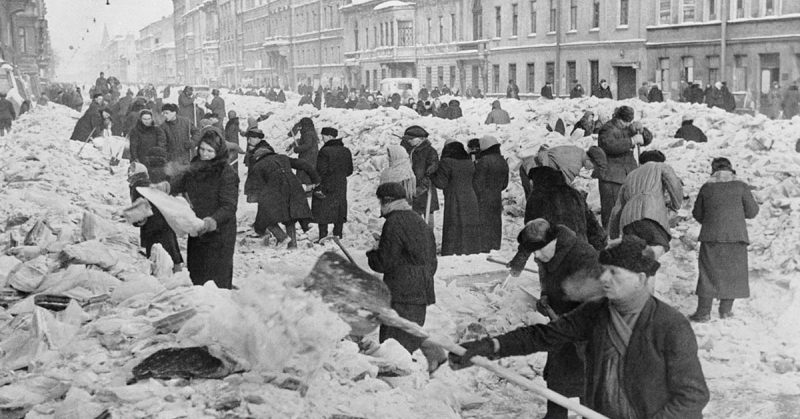Sieges are a familiar sight throughout the many pages of history and the many nations around the world. Yet there is one siege that left such a stain upon the histories of Russia, of Germany, and of Finland, that it is notorious even decades later – even today, over 70 years after the siege itself came to an end in the cold, snowy month of January. That siege is the infamous Leningrad Blockade, also known as the Siege of Leningrad.
The Leningrad Blockade is known as one of the deadliest, most prolonged and lengthy sieges in history. Although sieges were an extremely common method of breaking down city walls and royal fortresses during the Middle Ages and the Crusades, they fell out of favor as warfare advanced during World War I and all the skirmishes and battles that followed within the international community.
Sieges were, and still are, a brutal method of bringing an entire city to its knees – but, of course, an effective tactic via which nations and their armies can win a war not only against an enemy country, but also its people.
This is what Germany hoped would happen during the Leningrad Blockade – that the people and military of the U.S.S.R. would fall, and give in to their advances. Despite the great difficulty, great terror, and great disadvantage, the U.S.S.R. held its ground against incredible destruction.
Leningrad was the site of the most detrimental, most damaging, and deadliest sieges in all of history, but its citizens and soldiers lasted almost 900 days under fire from German troops to see a brighter future.
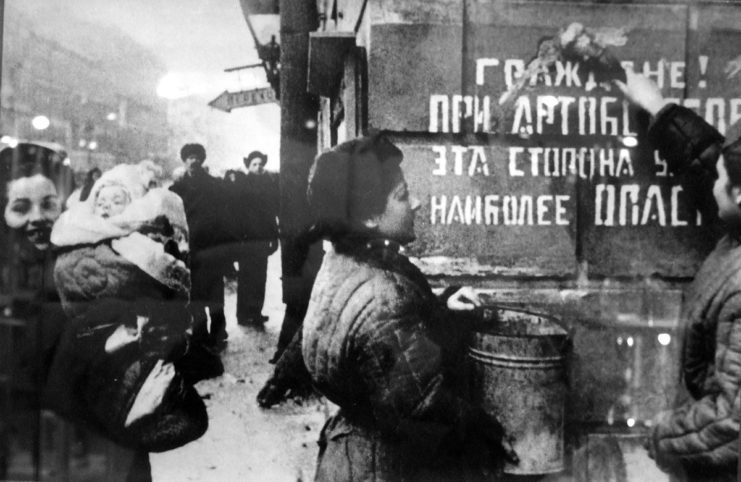
Why is it that the German military, and German officials, wanted to invade Leningrad in the Soviet Union? As the Axis Powers attempted to battle both the Allied Forces of Britain, the United States, and other nations on one front, they also faced the very serious threat of the U.S.S.R. invading and attacking from their eastern flank.
Adolf Hitler wanted to eliminate any and all threats to his Third Reich. Hitler’s military strategists always intended to capture Leningrad, and it was planned as one of three strategic locations in Operation Barbarossa, a military plot that aimed to capture Russia’s former capital and center of the nation’s revolution.
A military and social hub for the nation, Leningrad held both the Soviet Baltic Fleet and countless industrial facilities that provided the U.S.S.R. military units with all of the weapons they needed.
Leningrad was more than a simple city in a barren, snowy nation; it was what the Germans perceived to be the center of Russian military and civilian life. They weren’t far from right, as 11 percent of all U.S.S.R. production occurred in Leningrad.
The German leadership was certain that Leningrad would be a city easily captured.
Hitler believed that the German military would be able to quickly overtake the city, and even ordered a victory celebration to be prepared well before the siege began. The dictator hoped that, within just days, his forces would be able to raze the entirety of Leningrad and dole out Russian land to Germany’s allies.
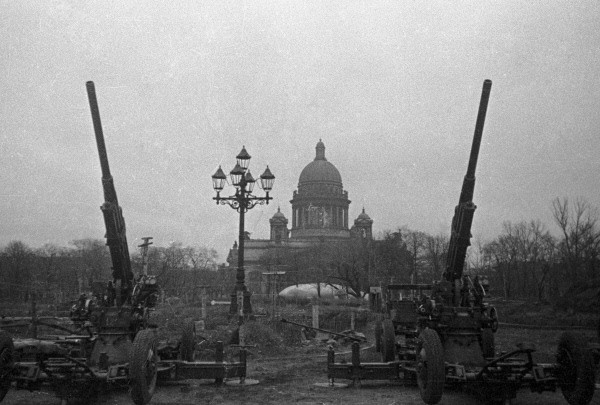
Hitler ordered his military forces to march on Leningrad, and the German Army began heading to the U.S.S.R. under the command of Wilhelm Ritter von Leeb. Although the initial plan was to attack and take control of Leningrad, the plan changed when von Leeb received word that the Finnish army was attempting to reach the same location to double efforts.
With this change in events, von Leeb decided that the best method of attacking the city was to lay siege. Together, the German and Finnish militaries were working to surround Leningrad and cut off its access to supplies, to communication, and to any support. Both armies were well prepared to starve the Russian citizens and forces to death in order to gain the city.
Quickly after the planning phase on September 8, 1941, the Leningrad Blockade officially began. Though plans were implemented in the months leading up to this date, it wasn’t until the Autumn that they were put into action. As German forces bombarded the city, the Soviets fought back relentlessly – many of their military dying in the effort. Increasingly larger numbers of German troops, however, continued to reach the outskirts of Leningrad, amplifying their power.
Meanwhile, Finnish troops aided their effort by working to break Soviet military codes and intercept communication within Leningrad.
As the German forces, and their allied Finnish military groups, pounded Leningrad with attacks, the U.S.S.R. attempted to fight back under the counter-siege command of three experienced officials: Andrei Zhdanov, Kliment Voroshilov, and Aleksei Kuznetsov. Together, these three Russian military experts attempted to coordinate a reverse attack on the Germans and evacuate as many citizens as possible.
Unfortunately, the Germans were too effective and efficient in their planning; they quickly surrounded Leningrad and cut off all supply routes to the city. Over the course of the next few weeks, the Germans conducted air attacks that killed more than 1,000 civilians, damaged crucial hospitals, and injured innocents wandering through packed shopping centers.
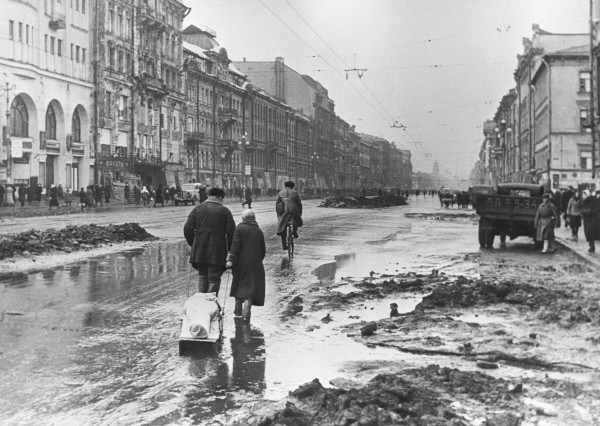
From 1941 to 1943, the air raids and siege tactics grew only more deadly and more intense as the Soviets attempted to handle incredible severe attacks upon Leningrad. Schools, hospitals, factories, and shopping centers were all considered fair and equal locations for the vicious German onslaught.
As the German military forces and Finnish allies laid siege to Leningrad, half a million civilians fell. Today, long after the end of the blockade, many of those citizens lie in the city’s Piskaryovskoye Memorial Cemetery – and those civilian losses represent just how much destruction occurred within the Russian city.
The Leningrad Blockade was the most economically destructive siege and resulted in more deaths than the atomic bombings of Hiroshima and Nagasaki combined, making it the deadliest and most lethal siege in the world’s history.
However, the firepower and air attacks conducted by German forces were not the only contributing factor in this immense number of losses. While under siege, the citizens of Leningrad also suffered extreme starvation. When winter hit at the end of 1941 and the beginning of 1942, those living within Leningrad had essentially no food available to eat.
Each individual was given 125 grams of bread upon which to survive – but this wasn’t bread as we know it today. Because bread couldn’t be baked due to shortages during the siege, the Russians were actually eating a mixture that contained up to 60 percent sawdust. Finally, the blockade became so oppressive that only members of the military were allowed to eat this “bread” for two weeks.
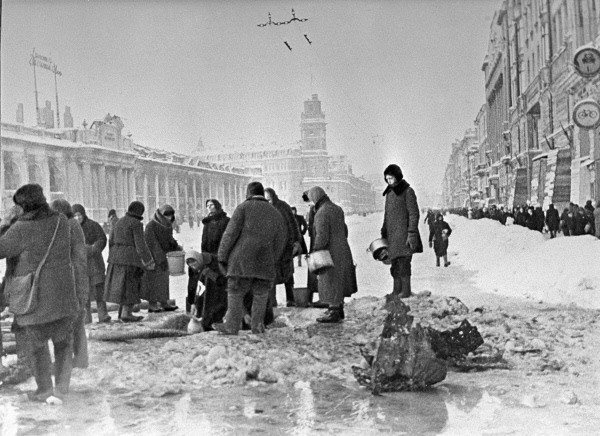
As a result, there were reports that some citizens turned to cannibalism in an effort to survive starvation. These reports were mostly rumors and anecdotal and were certainly used by the local police to keep citizens inline as they were told if they didn’t behave they would be locked in a cell with the cannibals.
That said,in a book released by Anna Reid in 2011, “Leningrad: The Epic Siege of World War II, 1941-1944”, it was reported that the cannibalism was more widespread. According to Reid, the Russian officials recorded at least 13 separate events during which civilians killed others in order to survive. Despite the desperate circumstances within Leningrad, the Russian government refused to tolerate cannibalism. They arrested over 2,000 citizens for eating either corpses or killing and eating others. Corpse-consumers were sentenced to prison while those who murdered others in order to eat were shot on the spot.
After an incredible and difficult 872 days, on January 27th 1944, the Leningrad Blockade ended, and German forces left the city to its own devices.
By the siege’s end, as many as 1,500,000 military men and civilians were killed, and 1,400,000 innocent citizens were evacuated from the city itself in hopes of saving lives. 3,200 residential buildings, 9,000 wooden houses (burned), 840 factories and plants were destroyed in Leningrad and suburbs.
Unfortunately, so many of those who were sent beyond the city’s borders fell victim to starvation and deadly German aerial attacks.
The anniversary of the siege is still commemorated every year in the former Leningrad, now named St Petersburg. The locals who were present during the siege are honored for their bravery and sacrifice during those dark times.
